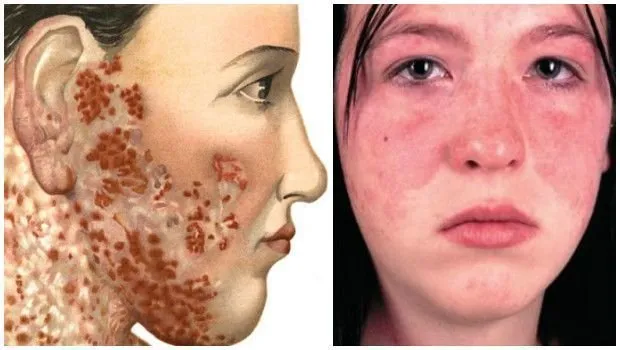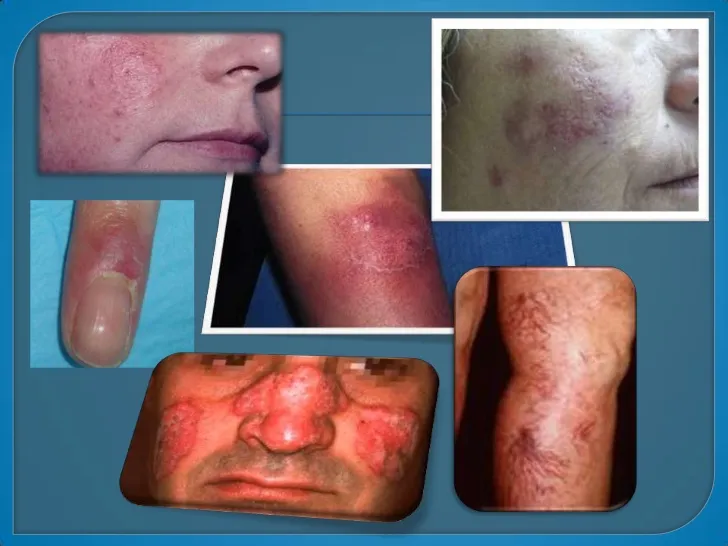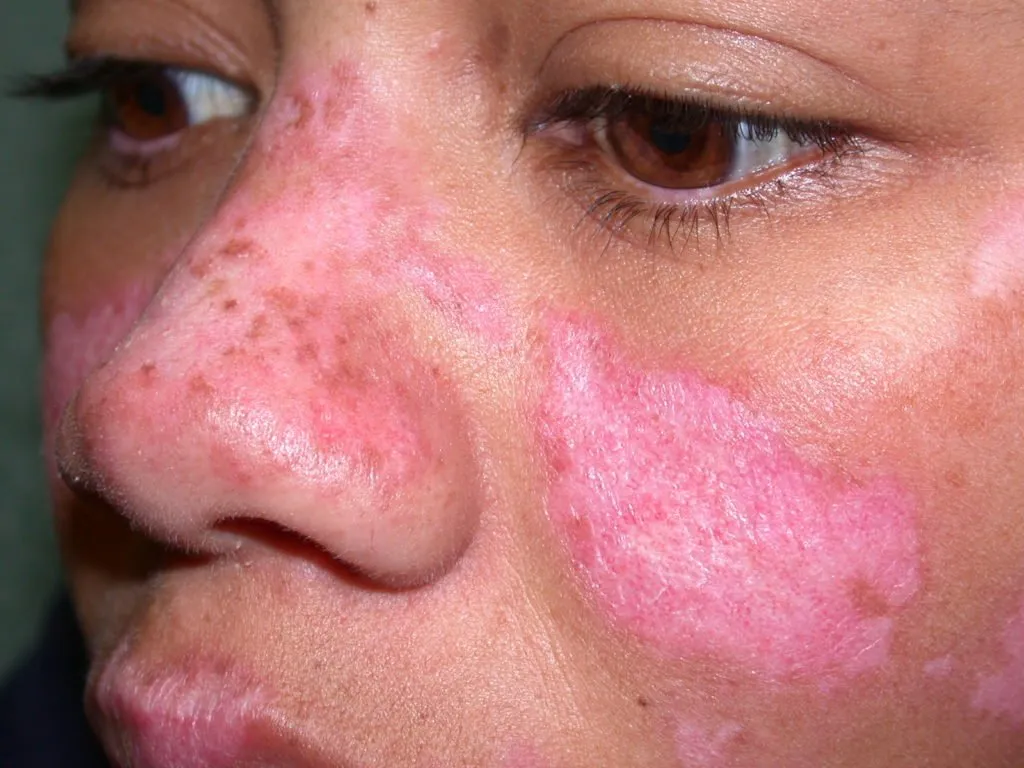Hello friends in this post I want to refer to one of the most influential diseases that exist, it is about "THE LUPUS", a multisystemic disease that many people are unaware of, in this blog I will clarify many doubts about this disease.

¿ Where does the name "Lupus" come from?
The term Lupus ("wolf" in Latin) is attributed to the thirteenth-century physician Rogerius who used it to describe the facial injuries that reminded him of the wolf's bite.
¿ What happens in autoimmune diseases such as Lupus?
The immune system is designed to protect and defend the body from foreign intruders (bacteria, viruses). It is the security system of your body. It contains many different types of cells, some act as "security guards" and are constantly "patrolling", looking for intruders. When they find one, they take action and eliminate it.

In Lupus, for some unknown reason, the immune system loses the ability to differentiate intruders from the healthy cells or tissues of the person. Basically, the "security guards" mistakenly identify the cells themselves as foreign (antigens) and take action to eliminate them. Part of their response is to bring antibodies to the area so that they adhere to the antigens (anything the immune system deems not to be their own or foreign) and form immune complexes. These immune complexes initiate a series of events that produce inflammation in the area. These immune complexes can travel through the bloodstream and lodge in distant tissues causing inflammation there.
¿ Which are the lupus signs?
The symptoms of Lupus vary enormously depending on the individual and the form of Lupus present. Most patients do not have all the symptoms. This list only serves to alert people and give clues that may indicate the presence of Lupus in an undiagnosed person:
- Sore and inflamed joints.
- Persistent fever above 38 degrees.
- Extreme prolonged fatigue.
- Skin rashes, including butterfly wings on cheekbones and nose.
- Pain in the chest when breathing.
- Anemia.
- Excess protein in the urine.
- Sensitivity to the sun or ultraviolet light.
- Hair loss.
- Blood clotting problems.
- White or blue coloring of the fingers with the cold.
- Convulsions
- Durable mouth or nasal sores
¿ Are there different types of Lupus?
There are four types of Lupus.
Cutaneous Lupus Erythematosus - only affects the skin. There are several types of cutaneous Lupus: the Chronic Cutaneous LE (LECC), which is sometimes also called Discoide, the Cutaneous Subacute LE (LECS) and the Acute Cutaneous LE (LECA).
Systemic Lupus Erythematosus (SLE) - attacks many systems in the body, such as skin, joints, lungs, blood, blood vessels, heart, kidneys, liver, brain and nervous system.
Drug-Induced Lupus - may develop after taking certain medications. Symptoms disappear in a few weeks or months after stopping treatment.
Neonatal Lupus - is a rare condition in the fetus and newborn. It is not the same as the LES.

¿ Is Lupus a deadly disease?
Lupus is not a universal deadly disease. In fact, with close follow-up and adequate treatment, more than 90% of patients have a normal life expectancy. Lupus varies in degree and intensity. There are mild, moderate cases and severe cases of Lupus that are more difficult to treat and control.
¿Who has Lupus?
Lupus can appear at any age and in any sex. 9 out of 10 people with Lupus are women. Lupus strikes women during their childbearing years (15 to 44 years) 10 to 15 times more frequently than men.
¿ Do hormones play a role in Lupus?
We do not know for sure. There are many personal accounts (anecdotal reports) that indicate the appearance of Lupus during pregnancy, the menstrual cycle, the use of oral contraceptives or hormone replacement therapy. Lupus affects many more women than men, so perhaps hormones play a role, influencing the immune system.

¿ Is Lupus hereditary?
We suspect (although we have no scientific evidence) that people inherit something from their parents that predisposes them to develop Lupus. They are not necessarily intended to develop Lupus but may be more susceptible. At the moment, there are no genetic tests that determine who is susceptible to Lupus and who is not.
return
¿ Is Lupus related to pollution or toxic products?
We do not know. The cause of Lupus and other autoimmune diseases is still unknown. The roles of genetics and environmental factors in triggering Lupus have not been determined. The American National Institute of Health has created the National Institute of Environmental Health Sciences to study issues related to the environment and health.
¿ What is a trigger?
It is believed that certain factors can trigger the appearance of Lupus or cause an outbreak. These factors can be:
- Ultraviolet light (UV).
- Certain medications
- Infections
- Some antibiotics
- Hormones
- Stress accentuated
- return
¿ Why is Systemic Lupus so difficult to diagnose?
There are many reasons for this:
It is a multisystem disease. For a disease of this type to be diagnosed there must be symptoms in many parts of the body and laboratory material that supports the presence of a multisystem disease.
It is a disease that does not develop quickly, but evolves slowly over time. The symptoms come and go and, generally, it takes enough time to accumulate enough symptoms to indicate the presence of a multisystem disease.
It is known as the Great Imitator, because it imitates many other diseases.
There is no single test for diagnosis. In fact, many people can test positive for Lupus, especially antinuclear antibodies, and not suffer from the disease.

¿ How is systemic lupus diagnosed?
Doctors have to gather information from various sources: medical history, laboratory tests and current symptoms. They use a list of 11 criteria that help the diagnosis of SLE. A person has to meet 4 of the 11 criteria to be diagnosed. Some criteria may have more diagnostic value such as kidney biopsy.
Of these 11 criteria, 7 are related to symptoms and 4 has to do with laboratory tests. The ANA is used as a research test for Lupus. Thus, if a person suffers several symptoms of systemic Lupus and his ANA test is negative, it will be considered quite evident the absence of Lupus, given that 95% of people with SLE have a positive ANA.
On the other hand, if the ANA is negative, it does not prove the presence of Lupus. The positive ANA is only an indicator, it does not serve for the diagnosis. A positive ANA may be present in several diseases such as Rheumatoid Arthritis, Sjögren's Syndrome or Scleroderma; in infectious diseases such as Mononucleosis, Malaria or Subacute Bacterial Endocarditis (SBE); or other autoimmune diseases such as Autoimmune Thyroidism or Autoimmune Liver Disease.
Certain medications can cause a positive ANA. About 20% of the general population will test positive in the ANA test without suffering any of the aforementioned diseases. Although it is often called the "Lupus Test", although it is not like a pregnancy test where a positive result only means one thing. The ANA is just an indicator, pointing to several directions for diagnosis and is only an indicator. The positive ANA test satisfies 1 of the 11 criteria. A person must meet 3 other criteria to reach the diagnosis.
Lupus Documentary - Bringing Awareness to the Disease
Imagns Source :
images taken from google images
https://sites.jmu.edu/gbio103/bbq4-final-blog-post-what-is-the-biochemistry-behind-lupus-back-to-the-future/
Source :
http://www.felupus.org/preguntas.php
